Convert Negative Numbers To Positive In Excel
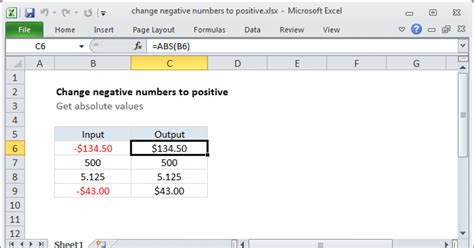
Introduction to Converting Negative Numbers to Positive in Excel
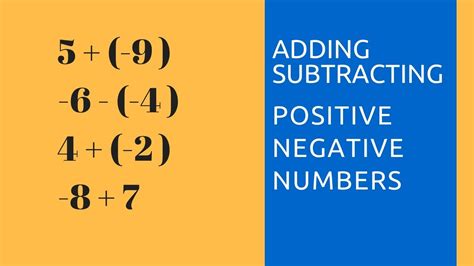
When working with numerical data in Excel, you may encounter situations where you need to convert negative numbers to positive. This could be due to various reasons such as incorrect data entry, calculation errors, or the need to analyze data in a different context. Excel provides several methods to achieve this conversion, ranging from simple arithmetic operations to using built-in functions. In this article, we will explore the different ways to convert negative numbers to positive in Excel, highlighting their advantages and disadvantages, and providing step-by-step instructions for each method.
Method 1: Using Arithmetic Operation
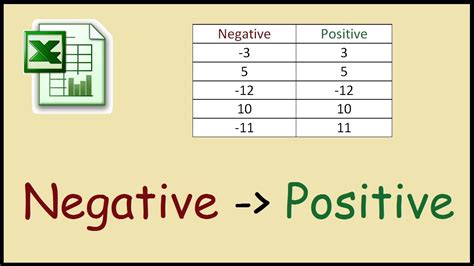
The simplest way to convert a negative number to positive is by using an arithmetic operation. You can multiply the negative number by -1, which will change its sign to positive. This method is straightforward and can be applied directly in a cell or as part of a formula.
- Select the cell where you want to display the positive value.
- Type the formula:
=A1*-1, assuming the negative number is in cell A1. - Press Enter to apply the formula.
This method is useful for one-time conversions or when working with small datasets. However, for larger datasets or when you need to perform this operation frequently, using a formula might be more efficient.
Method 2: Using the ABS Function

Excel’s ABS function is specifically designed to return the absolute value of a number, which is always positive. The syntax for the ABS function is
=ABS(number), where “number” is the value you want to convert.
- Select the cell where you want to display the positive value.
- Type the formula:
=ABS(A1), assuming the negative number is in cell A1. - Press Enter to apply the formula.
The ABS function is more convenient and readable than the arithmetic operation method, especially when dealing with multiple conversions or complex formulas. It directly conveys the intent of converting a number to its absolute value, making your formulas easier to understand and maintain.
Method 3: Using VBA Macro
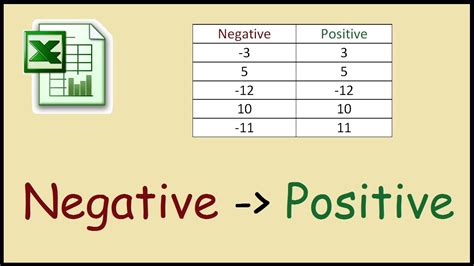
For those familiar with VBA (Visual Basic for Applications), you can create a macro to convert negative numbers to positive. This method is particularly useful when you need to apply this conversion to a large dataset or as part of a more complex data processing task.
Sub ConvertToPositive()
Dim cell As Range
For Each cell In Selection
If cell.Value < 0 Then
cell.Value = cell.Value * -1
End If
Next cell
End Sub
To use this macro:
- Open the Visual Basic Editor by pressing
Alt + F11or navigating to Developer > Visual Basic. - In the Editor, insert a new module by right-clicking on any of the objects for your workbook in the “Project” window and choosing
Insert>Module. - Paste the VBA code into the module window.
- Close the Visual Basic Editor.
- Select the range of cells containing the negative numbers you want to convert.
- Run the macro by pressing
Alt + F8, selectingConvertToPositive, and clickingRun.
Method 4: Using Power Query
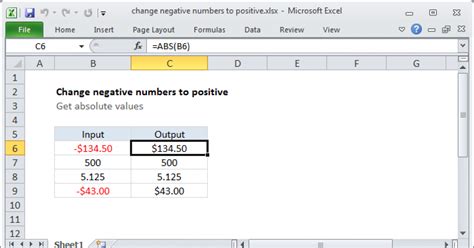
Power Query, a powerful data manipulation tool in Excel, can also be used to convert negative numbers to positive. This method is beneficial when working with large datasets or when you need to perform multiple data transformations.
- Select the range of cells containing the data, including the column with negative numbers.
- Go to the
Datatab and click onFrom Table/Rangeto open Power Query Editor. - In the Power Query Editor, select the column with negative numbers.
- Go to the
Add Columntab and click onCustom Column. - In the Custom Column formula, type:
=Number.Abs([YourColumnName]), replacing[YourColumnName]with the actual name of your column. - Click
OKto add the new column with positive values. - Load the query back into Excel by clicking
Close & Load.
📝 Note: When using Power Query, ensure that the column you're working with is of a numeric data type to avoid errors.
Choosing the Right Method
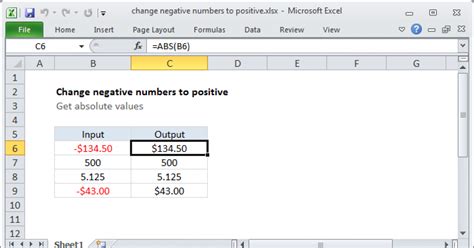
The choice of method depends on the specific requirements of your task, such as the size of the dataset, the frequency of the operation, and your familiarity with Excel functions and VBA. For most cases, the ABS function provides a simple and efficient way to convert negative numbers to positive. However, for more complex data manipulations or when working with large datasets, Power Query might offer more flexibility and power.
| Method | Description | Advantages | Disadvantages |
|---|---|---|---|
| Arithmetic Operation | Multiply by -1 | Simple, direct | Less readable, not suitable for large datasets |
| ABS Function | =ABS(number) | Convenient, readable, efficient | None notable |
| VBA Macro | Custom macro | Flexible, powerful for complex tasks | Requires VBA knowledge, can be overkill for simple conversions |
| Power Query | Data manipulation tool | Powerful for large datasets and complex transformations | Steep learning curve, overkill for simple tasks |
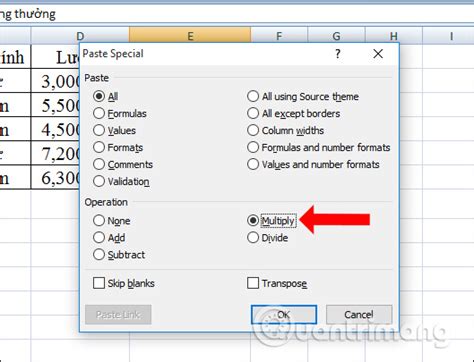
In summary, converting negative numbers to positive in Excel can be achieved through various methods, each with its own set of advantages and best-use scenarios. By understanding these methods and choosing the one that best fits your needs, you can efficiently manipulate your data and achieve your goals in Excel.
To recap, the key points of converting negative numbers to positive include understanding the different methods available, such as arithmetic operations, the ABS function, VBA macros, and Power Query, and selecting the most appropriate method based on the complexity of the task and personal familiarity with Excel’s features. Whether you’re working with small datasets or complex data analyses, Excel provides the tools necessary to efficiently convert negative numbers to positive, enhancing your data manipulation capabilities and contributing to more effective data analysis and decision-making processes.
What is the simplest way to convert a negative number to positive in Excel?
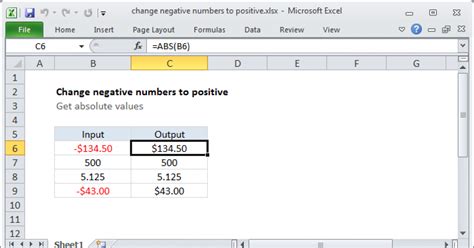
+
The simplest way is to use the ABS function, which returns the absolute value of a number, always resulting in a positive value.
Can I use VBA to convert negative numbers to positive?
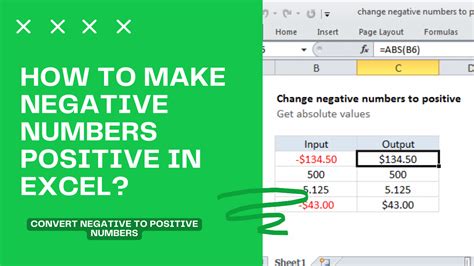
+
Yes, you can create a VBA macro to convert negative numbers to positive. This method is useful for large datasets or when integrating with other data processing tasks.
How do I choose the best method for converting negative numbers to positive in Excel?

+
The choice of method depends on the size of the dataset, the complexity of the task, and your familiarity with Excel functions and VBA. For simple conversions, the ABS function is often the most convenient. For more complex tasks or large datasets, consider using Power Query or VBA macros.



